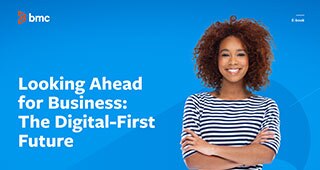To be successful in today’s world, companies must harvest and exploit valuable data with automation and intelligence to optimize business operations, create new routes to revenue, and clear a pathway to innovation.
What is the ADE framework?
If companies are to thrive amid the rapid transformation we continue to experience, they must reorient the relationships between society, government, and the way we do business. The ability to adapt to these changes, increase investment in digital transformation, and evolve to new business models will enable companies to better prepare for a future of growth.
The Autonomous Digital Enterprise is the framework for the successful future enterprise. It’s a digital-first business with distinct tech tenets and operating model characteristics that support transformation through actionable insights, business agility, and customer centricity.
Tech tenets
Leveraging and optimizing technology is key to ADE evolution. We’ve identified five technology tenets where an ADE should dedicate its efforts and investments by developing skills and curating solutions and tools for maximum impact. Coupled with the operating models listed below, these technology tenets represent the focus for successful outcomes of an ADE.
Transcendent customer experience
Deliver an omnichannel, multimodal, cloud-first experience powered by AI that:
- Gives customers and employees what they need by making technology feel more human
- Enables rich do-it-yourself experiences backed by human expertise
- Recognizes any device as a channel for interaction
- Leverages analytics and orchestration for a frictionless experience
Automation everywhere
Embrace new and emerging technologies and harness explosive data growth to drive highly automated business processes that are orchestrated, controlled, and executed by software. In an ADE, automation is a complementary business function that augments human effort. By exploiting automation across the datacenter and to the edge, organizations can:
- Execute with efficiency and scale
- Free up employees from mundane tasks
- Lower costs while improving customer interaction
Enterprise devops
Adopt and develop DevOps processes, tools, skills, teams, and leadership across software initiatives and existing portfolios to:
- Drive business agility, enable innovation, and delight customers
- Optimize for rapid continuous delivery of applications and services
- Embrace cultural and behavioral change to create a frictionless environment for success
- Propel security initiatives (DevSecOps) and data pipeline automation (DataOps)
Data-driven business
Create value from and monetize assets by making data central to the business, prioritizing robust analytics capabilities, and supporting a systematic approach to data strategy, architecture, operations, and execution. A data-centric mindset will allow businesses to:
- Extract enterprise-wide data, including IoT, social media, and customer engagement systems
- Employ artificial intelligence (AI) and machine learning (ML) to optimize, improve, guide, and execute actions
- Monetize data assets with high-value business use cases
Adaptive cybersecurity
Manage the growing risk landscape that has far exceeded the capacity for manual human intervention by automatically and programmatically mitigating new and evolving threats across the digital landscape:
- Combine AI-enabled solutions with a crowdsourcing environment to detect threats
- Employ DevSecOps to bridge the gap between development, security, and operations teams
- Adopt mature access and authentication practices within a Zero Trust framework
- Manage the challenges of talent scarcity, remote work, and explosive connectivity
"As the role of technology continues to grow in importance in the management and operations of every company, AI-driven automation will be the key in managing the complexity and scale for every organization."
— Ayman Sayed, BMC President and CEO
Competitive differentiators
An ADE is growth-oriented, replacing manual and redundant tasks with automated intelligence and freeing up people to be creative, serve customers, and collaborate on higher-level pursuits. The successful ADE is defined by these three criteria and outcomes:
-
Actionable insights
By leveraging newer technologies and analytics, an ADE can move beyond data correlations and business or system alerts towards true actionable insights, broader perspectives, and predictive intelligence to drive faster, better decision making.
-
Business agility
Failing to meet the changes demanded by internal and external customers leads to irrelevance. By automating rote and redundant tasks, organizations gain the flexibility to better understand and guide the digital enterprise towards innovation, leading to significant improvements in customer satisfaction, employee engagement, and operational performance.
-
Customer centricity
Companies with the highest customer satisfaction scores returned double shareholder value over ten years. By minimizing the effort required to manage the large, complex digital enterprise, employees are freed up to work closer with business lines and customers to better understand the dynamically changing market and provide a superior experience.
ADE operating model characteristics
These are the five key areas that will help an ADE create and deliver value to customers.
- Ecosystem-driven innovation: Offloading non-differentiated efforts to partners (software and infrastructure solutions) that offer best-in-class capabilities to prioritize core differentiators.
- Digital business domains: Integrating business, operations, and technology into autonomous businesses-within-the-business for end-to-end delivery with minimal additional support.
- ESG initiatives: Building environmental, social, and governance (ESG) best practices into every technical architecture and decision to achieve compliance with current and future regulations.
- Transformed workplace: Leveraging technology, work environment models, and organizational processes to drive improvements across employee communication, satisfaction, wellness, and inclusivity.
- Amplified IT: Establishing Centers of Excellence that deliver technology to support innovation initiatives across the company.
How BMC supports your ADE evolution
BMC is uniquely qualified to aid you on your ADE journey with a range of solutions.
